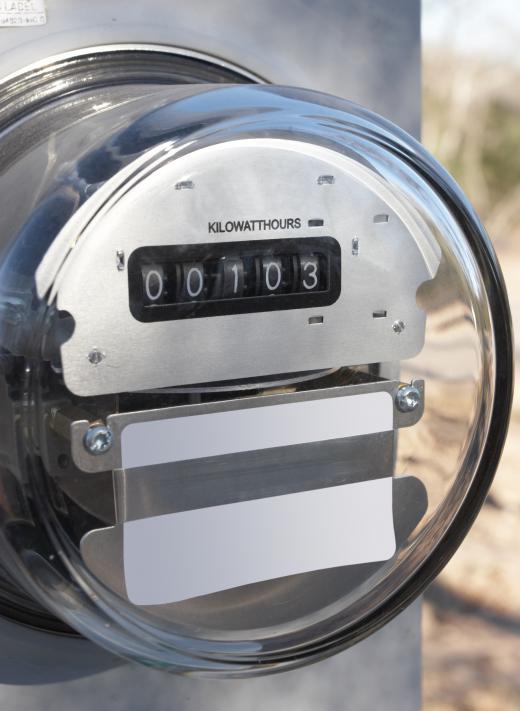A load meter is a device that is commonly found within the electrical meters that are installed by utility companies. The primary function of this gauge is to indicate the peak usage of electricity since the last time that the monitor was read, normally to determine if any sudden power surges had occurred within the last month that would cause the other readings to be invalid. Homeowners can also use the technology to determine ways to reduce energy and when the vast majority of their electrical usage occurs. Some load meters also have a separate indicator that measures the current voltage (amperes) being drawn from the utility company in real time, making it easier to track levels of energy conservation.
There are two distinct types of load meters that are installed throughout the world; mechanical and electronic. Mechanical load meters are normally round, with a glass enclosure around their perimeter, and alongside the face, there will be several dials that give various readouts. The largest dial on this type of system is the actual load readout, and it will point to a certain number that is measured in kilowatts (megajoules). If the dial is between two numbers, then the lesser of the two are recorded by the utility company. Some mechanical load meters have a second large dial, usually red in color, which indicates the current power being consumed by the residence.

An electronic load meter works exactly the same way in principle, but instead of the multiple dials, all of the information is shown on a small digital screen. This type of meter transmits a faint signal that utility companies can receive from several hundred yards or meters away, eliminating the need to physically inspect the load meter boxes except when tampering is expected. The downside of this type of load meter is that the display is simply a number that often has no bearing on the weekly or monthly usage, so it means little to the consumer when trying to estimate or track usage.
An individual load meter is also available for purchase by consumers to track their energy consumption more efficiently. These devices have a standard electrical connector that allows for any household item that runs off of a current to be plugged into them, and the readout display can be programmed to track power usage by the hour, day, or month. By checking each major appliance within the home, consumers will better understand which items consume the most power and how to control their usage more efficiently. Some of these personal load meters are even pre-programmed with information on what current model appliances draw in power for comparative purposes, making it easier to decide the proper time to upgrade.
